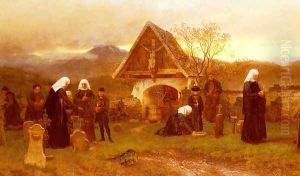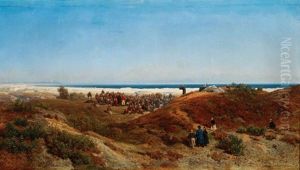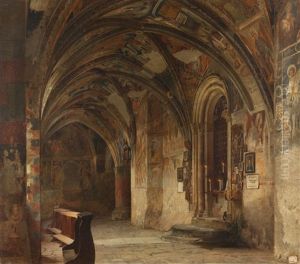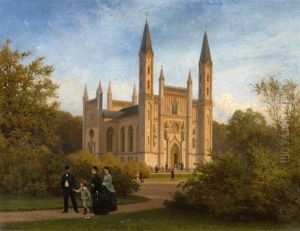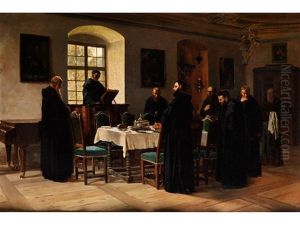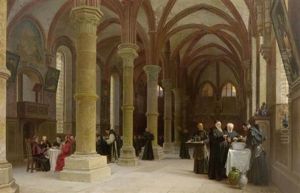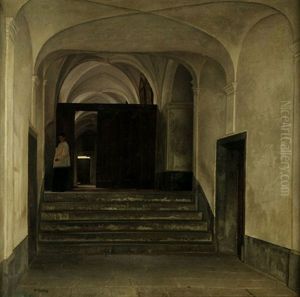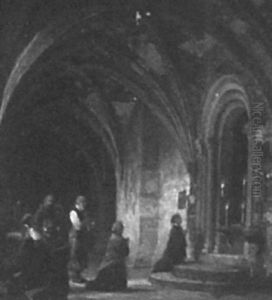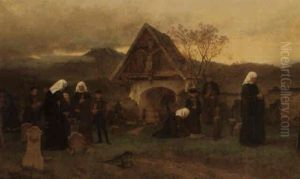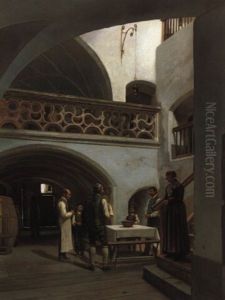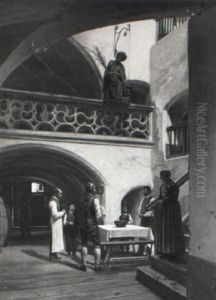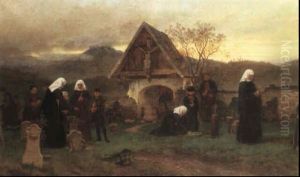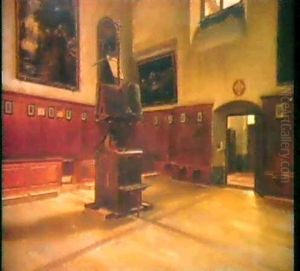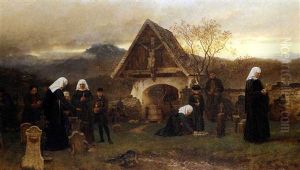Wilhelm Ludwig Friedrich Riefstahl Paintings
Wilhelm Ludwig Friedrich Riefstahl was a 19th-century German painter, known for his works that often depicted historical and religious themes. Born on March 19, 1827, in Neustrelitz, Germany, Riefstahl grew up in a period where German Romanticism was having a significant impact on the arts, and this influence is seen in his work.
Riefstahl initially studied law at the University of Berlin, but his passion for art led him to abandon legal studies and instead pursue an education in painting. He attended the Düsseldorf Academy, which was a major center for art in Germany at the time, known for its emphasis on detail, craftsmanship, and historical subjects. At the academy, Riefstahl studied under renowned painters such as Theodor Hildebrandt and Carl Friedrich Lessing, who were significant figures in the Düsseldorf school of painting.
After completing his studies, Riefstahl traveled to Italy, a common practice for artists of his time seeking to refine their skills and find inspiration. His travels in Italy, particularly his time in Rome, played a crucial role in shaping his artistic style. He was deeply influenced by the works of the Old Masters and the rich historical and religious narratives that were prevalent in Italian art.
Riefstahl's work is characterized by its fine detail, rich coloration, and often grandiose subject matter. He painted scenes from history and mythology, as well as religious motifs, which were popular with the art patrons of his time. One of his notable works is 'The Martyrdom of the Ten Thousand,' which depicts the legendary massacre of Christian soldiers by the Persians, as recounted in the hagiographies. The painting is known for its dramatic intensity and elaborate composition.
Throughout his career, Riefstahl exhibited his work in various prestigious venues, including the Berlin Academy, where he received recognition and acclaim. His paintings were appreciated for their narrative quality and technical skill, and they contributed to the 19th-century tradition of history painting, which sought to convey moral and educational messages through depictions of significant events.
Wilhelm Ludwig Friedrich Riefstahl passed away on May 27, 1888, in Düsseldorf. Although he may not be as widely recognized today as some of his contemporaries, his work remains a testament to the artistic movements and cultural influences of his time. Riefstahl's paintings can still be seen in museums and collections, where they continue to be studied and appreciated for their historical value and craftsmanship.
